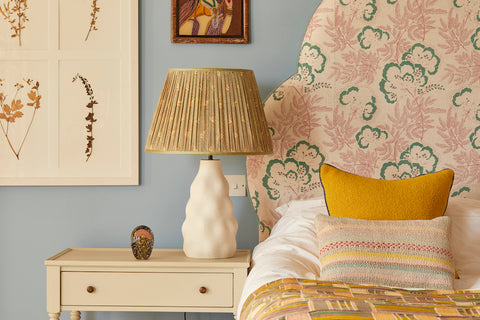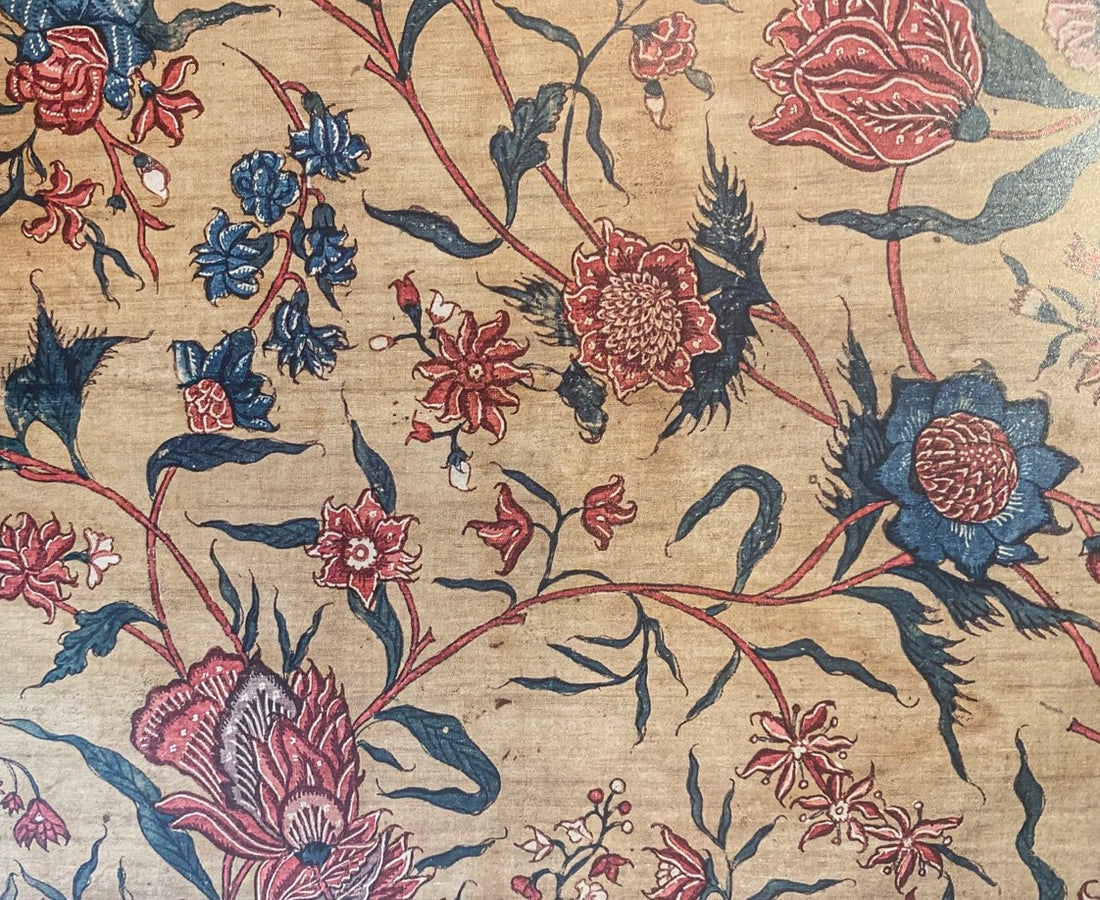Indian textiles are renowned worldwide for their vibrant colours, intricate designs, and rich cultural heritage. Among the wide range of motifs that adorn these textiles, floral motifs hold a significant place. The use of floral patterns in Indian textiles reflects a deep reverence for nature and a celebration of its beauty. At Samarkand Design we love these patterns and you will find lots of representations amongst our products - in the saris and block prints we use for our lampshades, the kanthas, cushions and rugs.
Flowers have always played a symbolic role in Indian culture, representing various emotions, beliefs, and aspects of life. In Indian mythology and religious traditions, flowers are associated with deities, rituals, and celebrations. Each flower carries its own significance, conveying messages of love, purity, prosperity, and spirituality.
For example, the tulip holds a significant place in the cultural and artistic history of India during the Mughal period. The Mughals, who were known for their love of gardens and floriculture, brought with them a fascination for the tulip from their Central Asian roots. The tulip's distinctive shape and vibrant colours captured their imagination, leading to its incorporation in various art forms, including textiles, carpets, and miniature paintings. Take a look at our collection of Suzani - this red suzani is a perfect illustration.

The use of floral motifs in Indian textiles can be traced back to ancient times. Archaeological discoveries reveal evidence of floral patterns on fabrics dating back thousands of years. In the ancient civilization of the Indus Valley, floral motifs were already present, showcasing the indigenous knowledge and artistic sensibilities of that era. Over time, different regions of India developed their unique floral design traditions, influenced by local flora, climatic conditions, and cultural practices.

Image Credit: Indian Textiles: 1000 Years of Art & Design
This image of a stone carving of the dream of Queen Maya (the Buddha's conception) shows a floral patterned bed-cover dates back to the 2nd century.
Floral motifs in Indian textiles are rendered with meticulous attention to detail and artistic finesse. Skilled artisans employ various techniques such as hand block printing, embroidery, weaving, and tie-dye to create intricate floral patterns. The motifs range from stylized and abstract forms to realistic depictions, capturing the essence and beauty of different flowers. The choice of colours, textures, and combinations of motifs varies across regions, reflecting the regional diversity and craftsmanship.
Each region has its distinctive style and interpretation of floral designs. For instance, the vibrant and exuberant Phulkari embroidery of Punjab showcases large, stylised flower motifs but this example is from Pakistan.
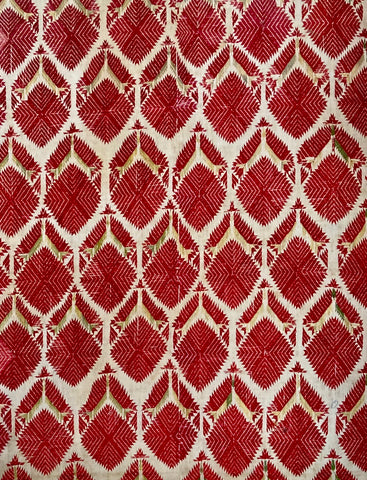
Image Credit: Indian Textiles: 1000 Years of art and design.
The delicate and intricate Chikankari embroidery of Lucknow features delicate floral patterns.
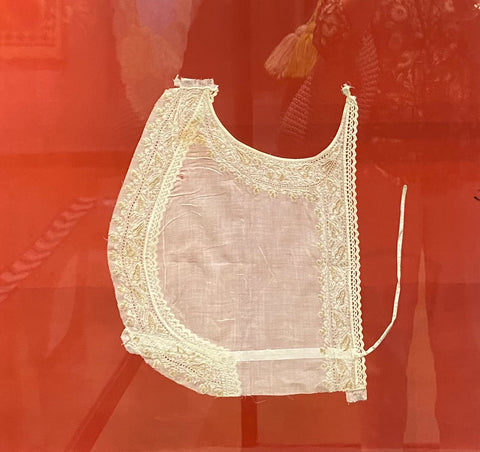
The Kalamkari textiles of Andhra Pradesh exhibit intricate hand-painted floral designs. Have you seen our lovely shades using Kalamkari
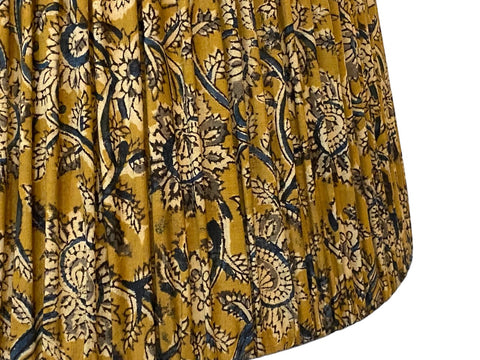
While the vibrant Bandhani textiles of Rajasthan incorporate floral motifs in tie-dye patterns. Here is our screen printed version of a Bandhani pattern.
Floral motifs in Indian textiles serve as a visual testament to the country's rich cultural heritage, artistic traditions, and deep-rooted connection with nature. They embody the essence of India's diverse flora and fauna, bringing the beauty of flowers to life through intricate craftsmanship.
It seems the perfect time of year to celebrate the floral motifs in Indian textiles - in the marvellous month of May with all the bounty that the natural world has to offer, bursting forth,
Take a look at some of our favourite designs with a floral theme.
